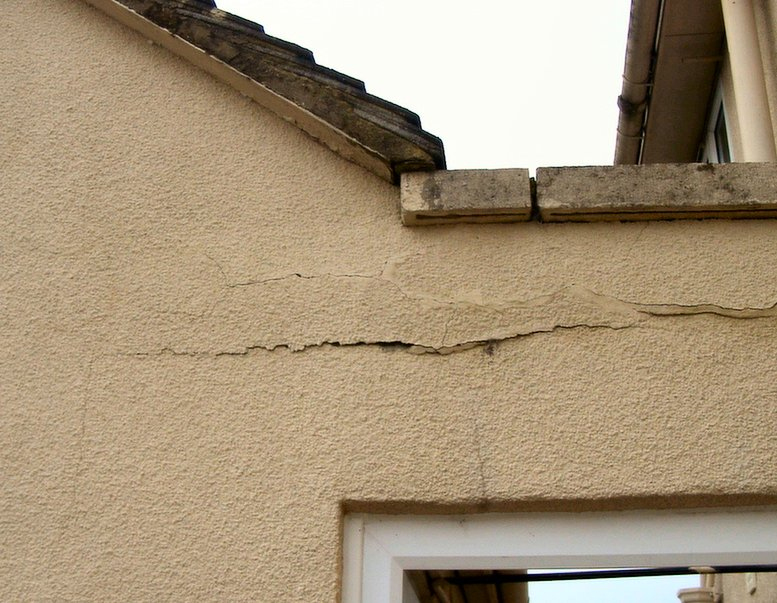Building failure
Failure occurs when the desired outcomes are not achieved. It is the opposite of success.
Culvert, screen and outfall manual, (CIRIA C786) published by CIRIA in 2019, defines failure as: ‘Inability to achieve a defined performance threshold.’ And catastrophic failure as: ‘…the situation where the consequences are immediate and severe.’
Construction projects are costly, complex and often involve a large number of different stakeholders, suppliers and technologies, meaning that the potential for failure is considerable. Failures can occur at a project level, typically resulting in cost or time overruns, or disputes, or they can occur at a construction level, generally caused by deficiencies in design, products, specifications or workmanship.
Some of the most common reasons for project failure include:
- Cost overruns due to inaccurate estimates and budgets, changing market conditions, and so on.
- Poor briefing.
- Scope creep, where the extent of the work expands beyond the original agreement.
- Delays due to incomplete or unclear information.
- Break down in the relationship between the parties to the project.
- Site conditions.
- Design errors, lack of co-ordination or clashes.
- Insolvency of contractors or suppliers.
- Variations.
- Financing.
- Lack of qualified and available workers, specialists, materials, plant, and so on.
Common construction failures include:
- Cracking and building movement.
- Dry rot, wet rot, woodworm and mould.
- Damp.
- Condensation.
- Structural failure.
- Metal fatigue.
- Window and door failure.
- Defects in brickwork (see also: Efflorescence / Spalling).
- Defects in stonework.
- Flooring defects.
- Roofing defects (See also: Flat roof defects).
- Sick building syndrome.
- Wall tie failure.
A structure will fail when a material or system is put under strain at the limit of its strength, resulting in cracks or deformation. Once it surpasses its ability to endure the loads, it will fail. When designing structures, the ultimate failure strength of a material or element must be taken into consideration, with a factor of safety integrated into the design analysis, enabling it to take certain stresses and strains without failing.
Building defects can be 'patent' or 'latent'. Patent defects are those which can be discovered by reasonable inspection. Latent defects are those which cannot be discovered by reasonable inspection, for example problems with foundations which may not become apparent for several years after completion when settlement causes cracking in the building. When a latent defect becomes apparent, it becomes patent rather than latent.
[edit] Related articles on Designing Buildings
- Cascade failure.
- Consolidation.
- Cracking and building movement.
- Defects.
- Defects in brickwork.
- Defects in dot and dab.
- Defects in stonework.
- Deterioration.
- Failure modes and effect analysis (FMEA).
- Failure of cast iron beams.
- Failure to mention asbestos.
- Flat roof defects.
- Flooring defects.
- Ground heave.
- Housing defects.
- In Plain Sight: reducing the risk of infrastructure failure.
- Latent defects.
- Mechanisms of structural failure.
- Patent defects.
- Progressive failure.
- Roofing defects.
- Smarter systems predicting failure.
- Structural failures.
- Wall tie failure.
Featured articles and news
RTPI leader to become new CIOB Chief Executive Officer
Dr Victoria Hills MRTPI, FICE to take over after Caroline Gumble’s departure.
Social and affordable housing, a long term plan for delivery
The “Delivering a Decade of Renewal for Social and Affordable Housing” strategy sets out future path.
A change to adoptive architecture
Effects of global weather warming on architectural detailing, material choice and human interaction.
The proposed publicly owned and backed subsidiary of Homes England, to facilitate new homes.
How big is the problem and what can we do to mitigate the effects?
Overheating guidance and tools for building designers
A number of cool guides to help with the heat.
The UK's Modern Industrial Strategy: A 10 year plan
Previous consultation criticism, current key elements and general support with some persisting reservations.
Building Safety Regulator reforms
New roles, new staff and a new fast track service pave the way for a single construction regulator.
Architectural Technologist CPDs and Communications
CIAT CPD… and how you can do it!
Cooling centres and cool spaces
Managing extreme heat in cities by directing the public to places for heat stress relief and water sources.
Winter gardens: A brief history and warm variations
Extending the season with glass in different forms and terms.
Restoring Great Yarmouth's Winter Gardens
Transforming one of the least sustainable constructions imaginable.
Construction Skills Mission Board launch sector drive
Newly formed government and industry collaboration set strategy for recruiting an additional 100,000 construction workers a year.
New Architects Code comes into effect in September 2025
ARB Architects Code of Conduct and Practice available with ongoing consultation regarding guidance.
Welsh Skills Body (Medr) launches ambitious plan
The new skills body brings together funding and regulation of tertiary education and research for the devolved nation.
Paul Gandy FCIOB announced as next CIOB President
Former Tilbury Douglas CEO takes helm.
UK Infrastructure: A 10 Year Strategy. In brief with reactions
With the National Infrastructure and Service Transformation Authority (NISTA).























